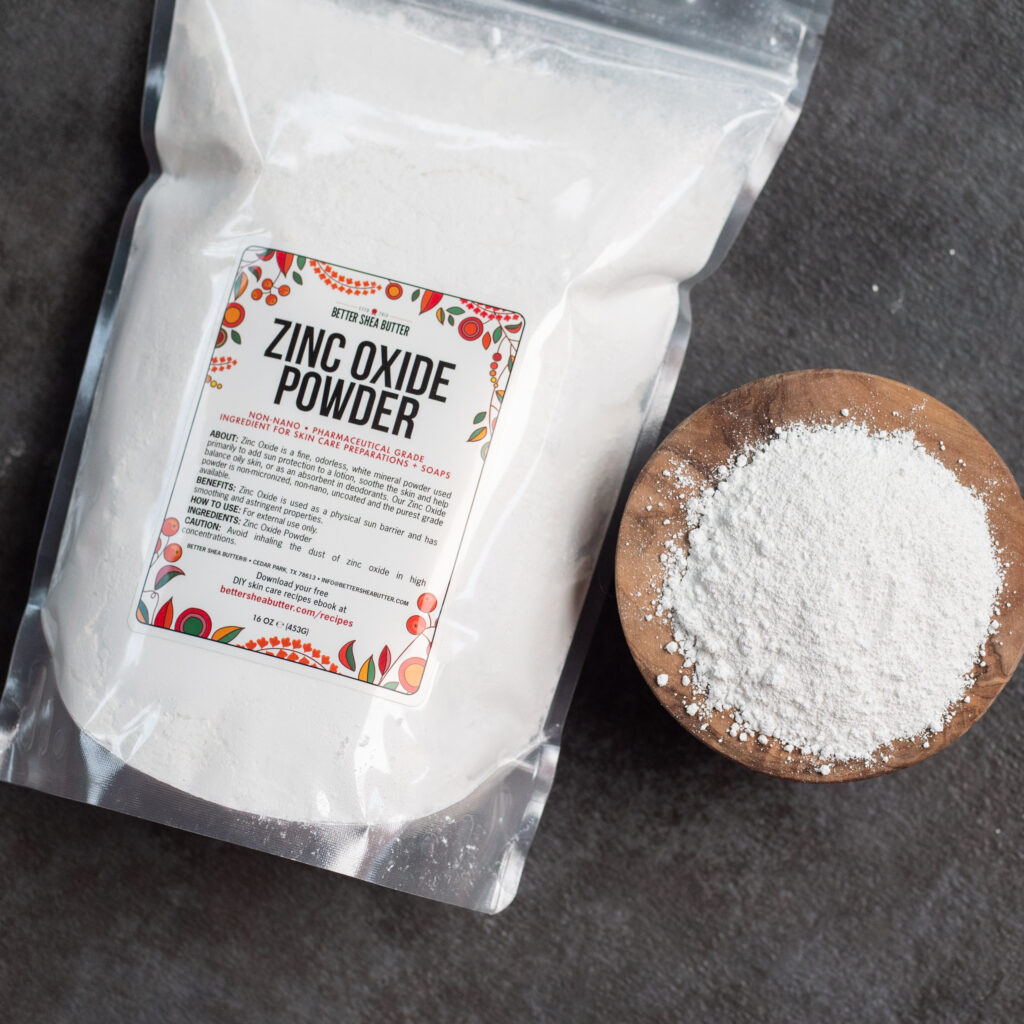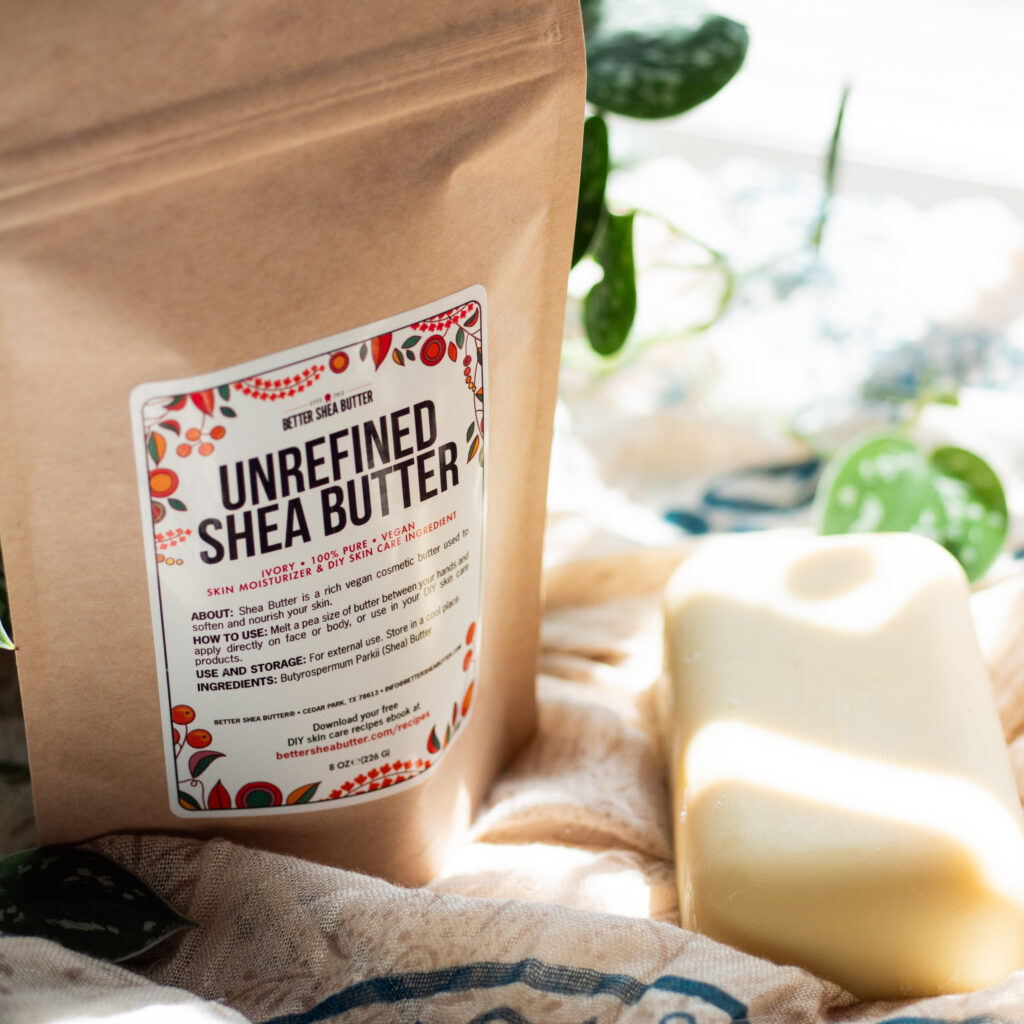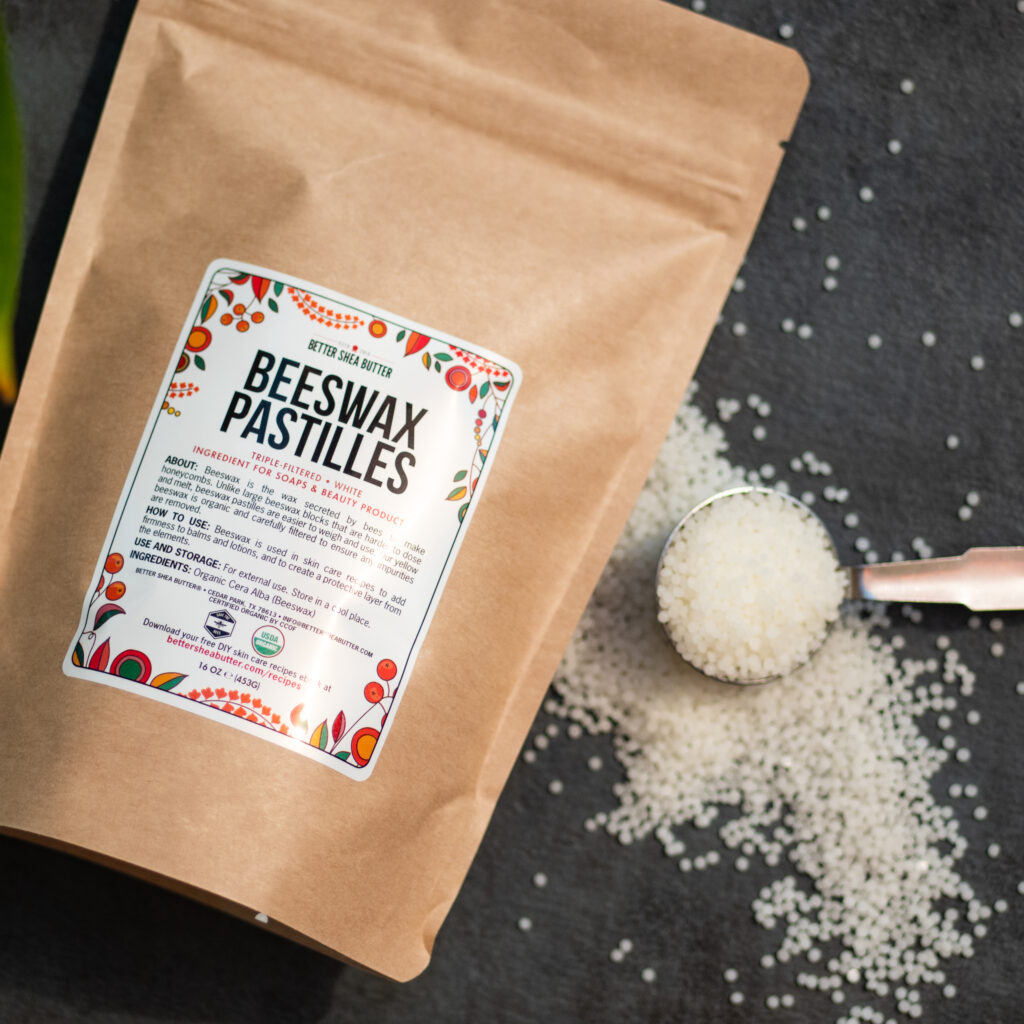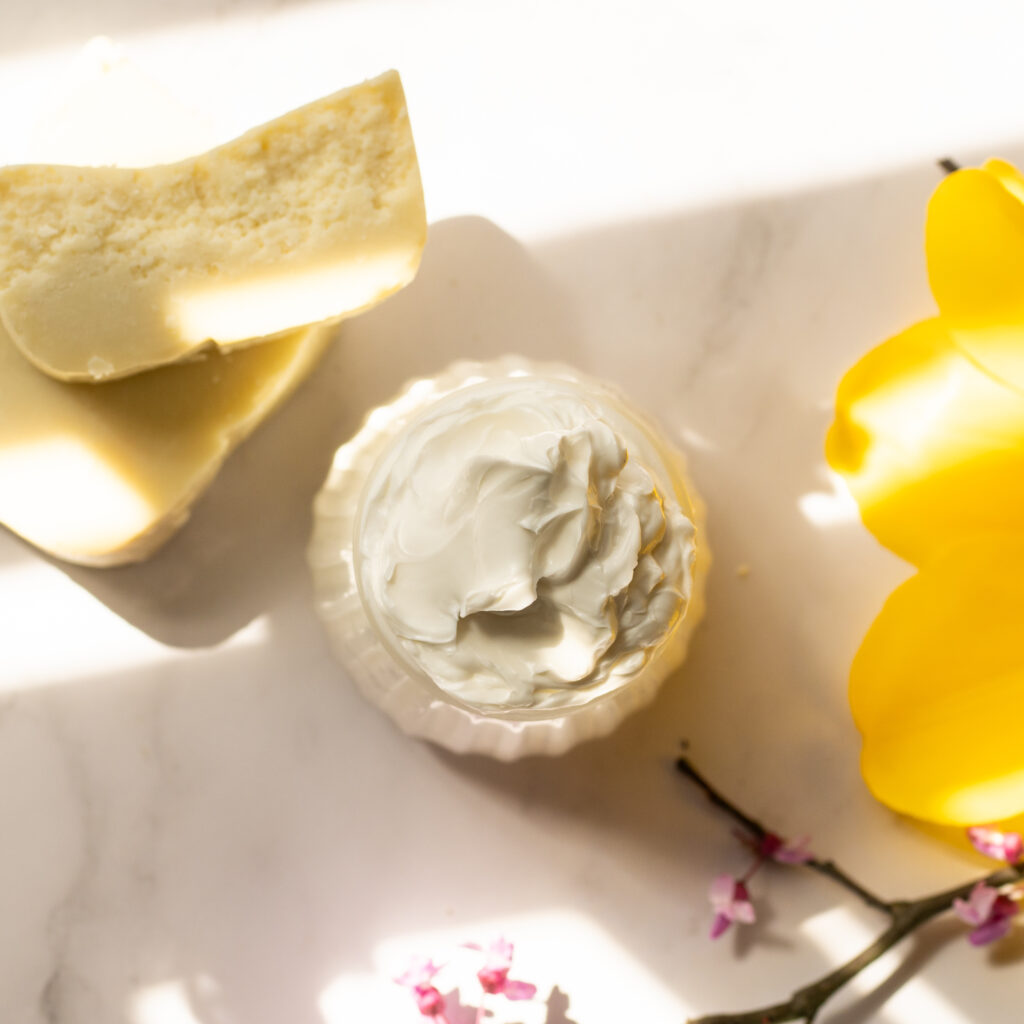Summer is just around the corner! Today I want to share my Non Nano Zinc Oxide Powder Sunscreen Recipe. This formula also contains natural moisturizing butters, carrier oils and waxes. It is a great option that is safe for all skin types and all ages.
Also included in this recipe is the option of using mica or iron oxide pigments to create a colored homemade sunscreen. You can adjust this shade to avoid the white cast from the zinc oxide lotion. Iron oxides have also been found to be protective against sunlight and blue light, so they add some extra protection for your skin.
NOTE: While I do not know and cannot vouch for the exact SPF of this formula without lab testing each batch that is made, I believe it is around 20. If you want to add more or less zinc powder to this formula, it is certainly possible. There are zinc oxide SPF approximation charts available online as well if you want to aim for more or less coverage.
Benefits of Zinc Oxide Sunscreen:
Sun protection has become a huge part of a good beauty routine over the past 30-40 years. While tanning used to be in vogue, there has been a downward trend in tanning as a beauty practice, either by naturally developing a tan outside of sun exposure or in a tanning salon. This is due to the potential dangers of excessive sun exposure to the skin. In addition to the dangerous side effects that excessive UV exposure can have on your health, it can also contribute to rapid skin aging, wrinkles, dark spots, and more.
While some sun exposure is good and necessary for health, especially for maintaining healthy vitamin D levels, overexposure during the hottest times of the day or during high UV days is not a good idea. Sunscreens are just another tool for healthy sun exposure, along with hats, clothing, umbrellas and sunglasses.
Over time, some of the active chemicals that have historically been used in conventional sunscreens have been found to be harmful, both to humans and wildlife. These have begun to be phased out of more modern sunscreens, creating formulas that are considered more “reef safe,” but even then, sometimes chemically absorbing the sun’s harmful rays just isn’t the best method for some skin types.
Non-nano zinc oxide powder is a safe choice It is considered to be a gentler method of sun protection overall that works by creating a natural barrier that prevents UV rays from coming into contact with your skin. This is why mineral sunscreen is widely regarded as the best type of sunscreen that is safe for people with sensitive skin, including children and babies.
Why Choose Non-Nano Zinc Oxide?
Non-nano zinc means that the particle size of the zinc is greater than 100 nanometers. This is what zinc oxide particles do wide range, meaning that when used as a sunscreen it will protect against both types of UV rays that can be harmful, UVA and UVB. Non-nano zinc is also not readily absorbed or filtered by coral reefs and marine life. This means that the harmful bleaching effect and damage to the food chain is avoided by choosing non-nano.

While in the past it was believed that nanozinc could enter deeper layers of the skin or even into the bloodstream, this has proven not to be the case. However, its level of protection is not as good as non-nano because the reduced particle size also causes a reduction in UVA protection.
Finally, many people find that sunscreens that build a natural sunscreen, such as non-nano zinc, are much gentler on the skin. Over time, this can help the skin barrier stay healthy because you avoid potential low-grade skin irritations that can occur with chemical-based sunscreen. This is another good reason to choose a natural sunscreen formula that avoids the use of these potentially irritating substances in favor of nutrient-rich and gentle natural ingredients. DIY zinc oxide sunscreen is also very easy to make and can be tailored to your skin care needs.
Safe sunscreen ingredients
Shea butter
Shea butter is a great choice for a sunscreen base. It is a natural butter packed with vitamins, antioxidants and nutrients that are great for all skin types. It has also been shown to have its own sun protection properties, tests have shown that it can have an SPF of around 4-6 and contains the same antioxidants found in green tea, called polyphenols. Shea butter also helps prevent moisture loss in the skin and helps the skin stay more hydrated over time by providing nutrients that allow it to repair itself faster.

Jojoba oil or other carrier oil
Jojoba oil, along with other carrier oils such as almond or apricot, has many antioxidant benefits. Antioxidants applied to the skin help eliminate some of the free radicals created by UV rays in the skin. These particular oils are also non-edible. Jojoba in particular helps regulate oil production in the skin, which can be helpful during a hot and humid summer.
I’ve heard a lot about the effects of raspberry seed and carrot oils, which many sources have reported as having high enough SPF to use as sunscreens on their own. However, studies show that this is not the case wide range protection or protection from UVA and UVB rays, so unfortunately it may not work as the main sunscreen ingredient in a formula. They are still very good natural carrier oils rich in nutrients with lots of antioxidants. Adding them to your formula would definitely help boost sun protection abilities.
Why not coconut oil? This favorite tropical oil, while very beneficial and hydrating, can also be extremely caustic, pore clogging. The effect of this can be increased by summer temperatures and humidity, along with increased sweating, so oil is usually not preferred, especially by those with oily or acne-prone skin.
Honeycomb
This natural wax is a great addition to this recipe to add staying power to your natural sunscreen formula. While it’s important to reapply sunscreen every 90 minutes to 2 hours, beeswax helps the natural sunscreen stay on your skin longer, adding a little more protection against water and sweat. It also contains high levels of antioxidants and is an anti-inflammatory substance that helps calm any skin irritation or environmental damage that may occur.

Essences
Some essential oils that can be beneficial to add to a sunscreen formulation are lavender, frankincense, frankincense, and chamomile.
It is best to avoid citrus oils for this type of formula as they can cause reactions to the sun or phototoxicityunless they are steam distilled.
How to Add Tint to Sunscreen DIY
Studies have shown that iron oxide pigments can help increase sunscreen coverage against UV and visible light. If you don’t prefer the natural light color of homemade zinc oxide sunscreen, you can add some natural coloring to this recipe. This can be as simple as adding some of your favorite bronzer powder, but if you really want to adjust your own skin tone, you can add a combination of brown, red and yellow iron oxide pigments. Olive tones may want to add a touch of blue or green mica to this as well.
Non-Zinc Oxide Sunscreen Recipe:
Components
Instructions
- Melt the shea butter and beeswax in a double boiler over low heat
- Remove from the boiler once completely melted and liquefied
- Set aside for about a minute to cool the butter and wax slightly
- Add your carrier oil, mixing well
- Add your optional essential oils
- Add the zinc oxide powder along with any optional shade or coloring powder, mixing well to avoid any lumps
- Chill in fridge or freezer until 50% solid then whip – you can also chill until 100% solid for a balm texture

I hope you enjoy this homemade zinc oxide sunscreen recipe and it helps you stay safe in the sun! As always, if you have any questions or comments, please comment below.
Author: Natalie, DIY Skincare Enthusiast
